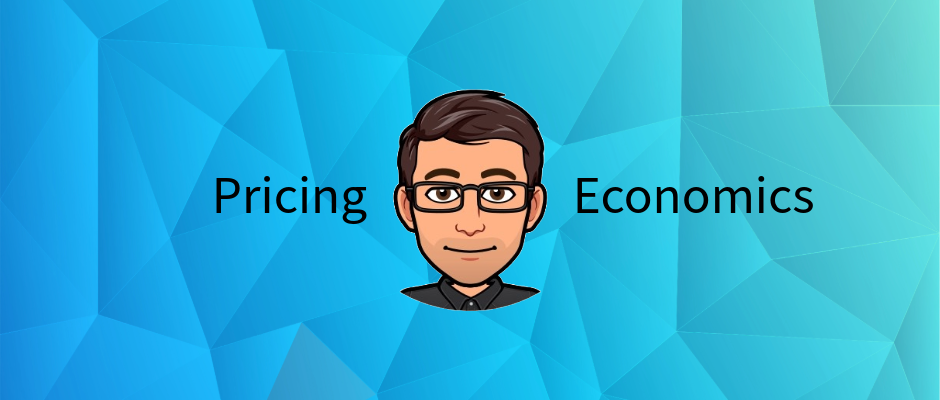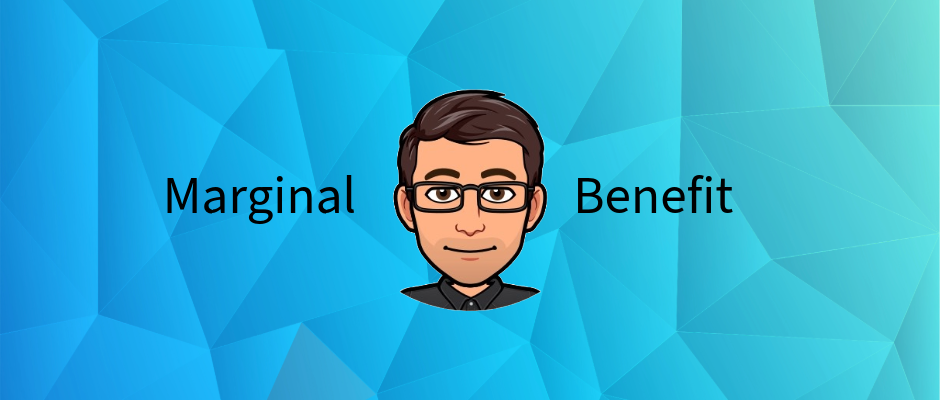Ever wondered why one cup of coffee costs $5 and another costs $2 right across the street? How a change in price impacts the demand for a good or service? How about how airlines seem to magically adjust their ticket prices?
The answer lies in the economics of pricing.
Pricing is more than just putting a number on a product; it’s a delicate dance between businesses, consumers, and ever-shifting market forces.
It’s finding the right price. The price that stimulates just the right amount of demand for your product or service.
There are entire departments at companies that spend all of their time on pricing. Whether it be pricing elasticity, pricing strategy, or brand positioning, pricing is incredibly important to businesses.
It’s a strategic tool that businesses use to maximize profits, compete effectively, and signal value to customers.
Understanding the underlying economic principles can empower you, whether you’re a business owner trying to set the right price, a consumer trying to snag the best deal, or just a person trying to learn.
Supply & Demand of Pricing Economics
The Economics of Pricing: Supply, Demand, and Equilibrium
At the heart of pricing lies the fundamental economic principle of supply and demand.
In economic terms, the saying goes something like “supply always equals demand, the price at which the supply and demand clear is the equilibrium point.”
This means that when demand for a product is higher than production, prices will increase to the point where demand is reduced.
Likewise, when demand for a product is weaker than supply, prices will decrease to the point where demand is stimulated.
Supply and demand are always adjusting to find the perfect equilibrium point where they are both able to clear.
It’s not perfect. These changes cause times of oversupply and undersupply.
Economic Pricing Theory
Before we get into different pricing strategies deployed, it’s important to talk about pricing elasticity to understand why certain goods and services act the way they do.
I am also going to do a deep dive on this subject and will link the article back here once it is complete.
Pricing Elasticity: How Sensitive Are Your Customers?
One crucial concept in pricing economics is the price elasticity of demand.
This is a topic talked about all day long at CPG companies and in those departments that are worried solely about price.
Price elasticity of demand measures how much the quantity demanded of a product changes in response to a change in its price.
Essentially, it tells you how sensitive your customers are to price fluctuations.
Elastic Demand: Price Matters a Lot
When demand is elastic, a small change in price leads to a large change in the quantity demanded.
This is generally bad.
Think of items with many substitutes, like a generic brand of cereal. If the price goes up, consumers can easily switch to another brand.
In this case, raising prices might decrease your overall revenue, as the drop in sales volume outweighs the increased price per unit. Lowering prices, on the other hand, could significantly boost sales.
Products with an elastic demand have an elasticity of greater than 1.
Inelastic Demand: Price Doesn’t Matter as Much
When demand is inelastic, a price change has a relatively small effect on the quantity demanded.
If you’re a business, this is what you want.
Essential goods, like gasoline or prescription medication, often have inelastic demand.
Even if the price goes up, people still need these items and are less likely to significantly reduce their consumption.
For products with inelastic demand, raising prices can increase revenue, as the decrease in sales volume is relatively small.
Products with an inelastic demand have an elasticity of less than 1.
Factors Affecting Elasticity:
Several factors influence the price elasticity of demand:
- Availability of substitutes: More substitutes = more elastic demand. This is also called product commoditization.
- Necessity vs. luxury: Necessities tend to have inelastic demand, while luxuries have more elastic demand. Think of gasoline. Regardless of what the price of gas is you are not going to change the amount of gas you use very much.
- Time horizon: Demand tends to become more elastic over time, as consumers have more time to find substitutes.
- The proportion of income spent on the good: Goods that represent a small portion of income tend to have more inelastic demand.
- Brand loyalty: Strong brand loyalty can make demand more inelastic.
Understanding elasticity is vital for businesses. It allows businesses to predict how changes in price will affect their sales and revenue.
For products with elastic demand, businesses need to be cautious about raising prices. For products with inelastic demand, they may have more flexibility.
Side note: Pricing elasticity of demand is wildly hard to calculate accurately. Yes, there are formulas available that you can use, but to use them in practice is difficult. Consumer tastes and preferences are always changing, so what your product pricing elasticity was yesterday doesn’t mean that it will be the same today. There’s also the complication that to calculate an elasticity; you need to have price change data to go by – which means that you have to actually change prices and see what happens before you can calculate what your elasticity is.
Pricing Methods
Cost-Plus Pricing: A Simple Approach (But Not Always the Best)
One common pricing strategy is cost-plus pricing. Businesses calculate the cost of producing a product or service and then add a markup to determine the selling price.
While simple to implement, this method often overlooks market dynamics and can lead to either underpricing or overpricing.
Cost-plus pricing works for very small businesses or new businesses but is not meant to last. As your business grows, you should have a better understanding of the market, your products, and your positioning in the marketplace and price appropriately.
Value-Based Pricing: Focusing on the Customer
Value-based pricing takes a different approach. It focuses on the perceived value of the product or service to the customer.
How much is the customer willing to pay for the benefits they receive?
This strategy requires a deep understanding of the target market and their needs.
Luxury Brands:
Luxury brands often employ value-based pricing, charging premium prices based on brand perception and exclusivity, even if the actual cost of production is relatively low.
Part of the allure of luxury brands is the cost. Having a high cost can become a status symbol if positioned correctly – regardless of the production cost.
Discount Brands:
The opposite is also true. How many times have you seen something on the shelf for $0.99 that’s been that way forever? … looking at you Arizona Tea and Chef Boyardee.
Those items are priced that way intentionally. They’re intentionally branded as discount items and seek out a certain customer that meets the brands’ profile.
Side note: there’s an entire study of economics related to luxury vs inferior goods. It’s slightly different than what was discussed here. I’ll probably do a post on that in a few weeks and will link it back here when done.
Competitive Pricing: Keeping an Eye on the Competition
In a competitive market, businesses often use competitive pricing.
This involves setting prices based on what competitors are charging.
The strategy can be effective for maintaining market share, but it’s crucial to differentiate your product or service in other ways, such as quality, customer service, or unique features.
Very competitive markets use this type of pricing regularly.
As an example, go to the grocery store and look at the bread aisle. There are probably 20 different brands of bread and they are all priced within a quarter or so of one another. That’s competitive pricing.
Side note: You do NOT want to end up in a space where overly competitive pricing becomes the norm. Your product or service will eventually become commoditized and it will drive down your margins.
Dynamic Pricing: The Price is Always Changing
Thanks to technology, dynamic pricing has become increasingly prevalent.
This strategy involves adjusting prices in real-time based on factors like demand, competition, and even the customer’s browsing history.
Airlines and online retailers are masters of dynamic pricing, constantly tweaking prices to maximize revenue.
Psychological Pricing: Playing Tricks on the Mind
Pricing isn’t just about logic; it’s also about psychology.
Businesses often use psychological pricing tactics to influence consumer behavior.
For example, pricing a product at $9.99 instead of $10 can make it seem significantly cheaper, even though the difference is only a penny.
Think about it – how many times have you bought something for $9.99 and said and/or thought “but it’s less than $10.00?” I would guess probably a few.
Key Takeaways for Businesses:
- Understand your costs: While not the only factor, knowing your costs is essential for setting profitable prices.
- Know your target market: What are their needs and how much are they willing to pay?
- Know your customer: What is your ideal customer like?
- Know your product: Is your product a luxury good trying to demand a high price, or is it a discount brand trying to move volume?
- Analyze the competition: What are your competitors charging and how can you differentiate yourself?
- Be flexible: The market is constantly changing, so your pricing strategy should be adaptable.
Key Takeaways for Consumers:
- Do your research: Compare prices from different sellers before making a purchase.
- Be aware of psychological pricing tactics: Don’t let clever pricing tricks influence your buying decisions.
- Consider the value: Don’t just focus on the price; think about the benefits you’ll receive.
The economics of pricing is a complex and fascinating field. By understanding the underlying principles, businesses can make more informed pricing decisions, and consumers can become savvier shoppers. So, the next time you see a price tag, remember that there’s a whole lot more going on than meets the eye.



